Differences between neighbouring allotments and gardens reveal we don’t all do things the same. But what about other countries? RHS Horticultural Advisor Adriana Czaja-Lobato shares her insights
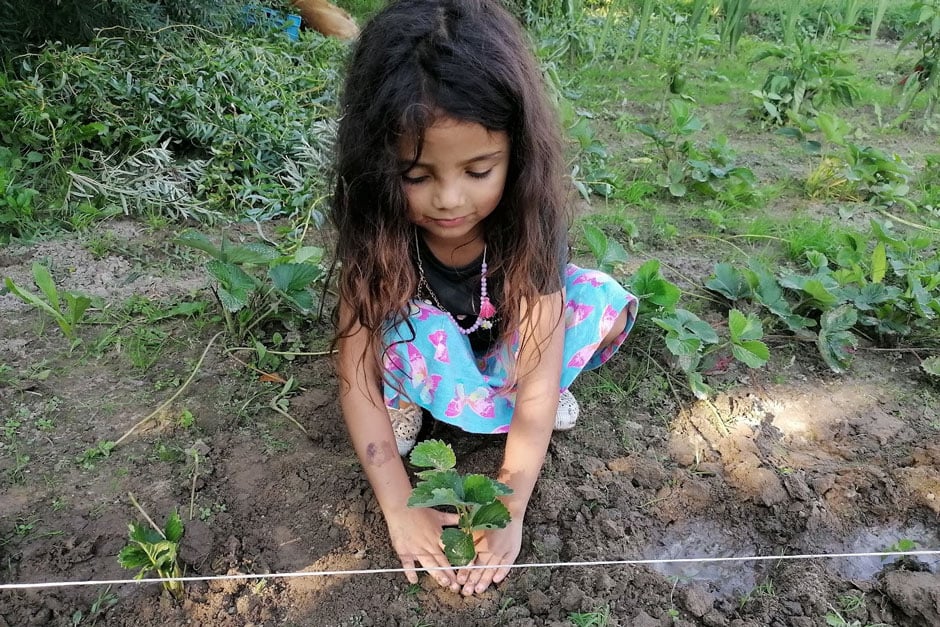
 When I was seven, my parents purchased a piece of land on the outskirts of our village in Poland. Here they built a wooden summerhouse and grew food. My family and I still spend summer holidays here when we return to Poland.
When I was seven, my parents purchased a piece of land on the outskirts of our village in Poland. Here they built a wooden summerhouse and grew food. My family and I still spend summer holidays here when we return to Poland.
At that time, growing soft fruit was quite popular and relatively profitable, so they planted half a hectare with blackcurrants and redcurrants. I remember spending what seemed like endless days picking and picking. We also collected fruits from surrounding growers, and every night a lorry collected them and took them to the fruit processors.
Between rows of currants we intercropped vegetables, to provide for our own needs. At some point, soft fruit growing became unprofitable, so more land was turned over to growing a greater variety of fruits, vegetables, trees, shrubs and flowers.
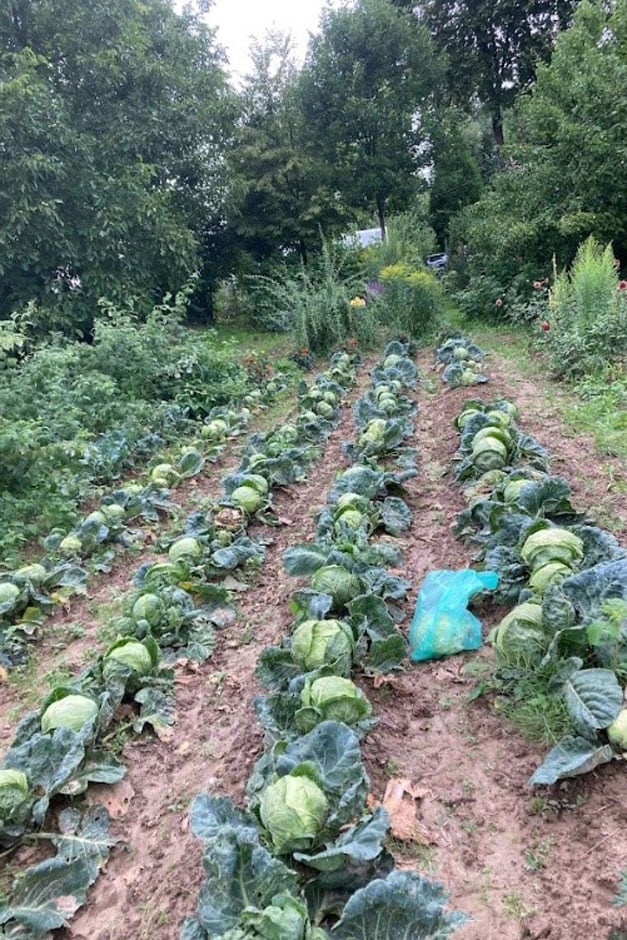 Despite their advancing years, my parents still grow a lot, often greatly exceeding their own needs. In Poland there is a culture of sharing, so neighbours, family and friends get a plentiful helping. Some, however, still ends up on the compost heap. When I ask “why do you grow so much?”, they say it’s wasteful to keep the plot bare!
Despite their advancing years, my parents still grow a lot, often greatly exceeding their own needs. In Poland there is a culture of sharing, so neighbours, family and friends get a plentiful helping. Some, however, still ends up on the compost heap. When I ask “why do you grow so much?”, they say it’s wasteful to keep the plot bare!
Living between two countries, I’ve noticed a number of cultural differences between British and Polish gardening – especially in the use of fruit and vegetables.
French and runner beans
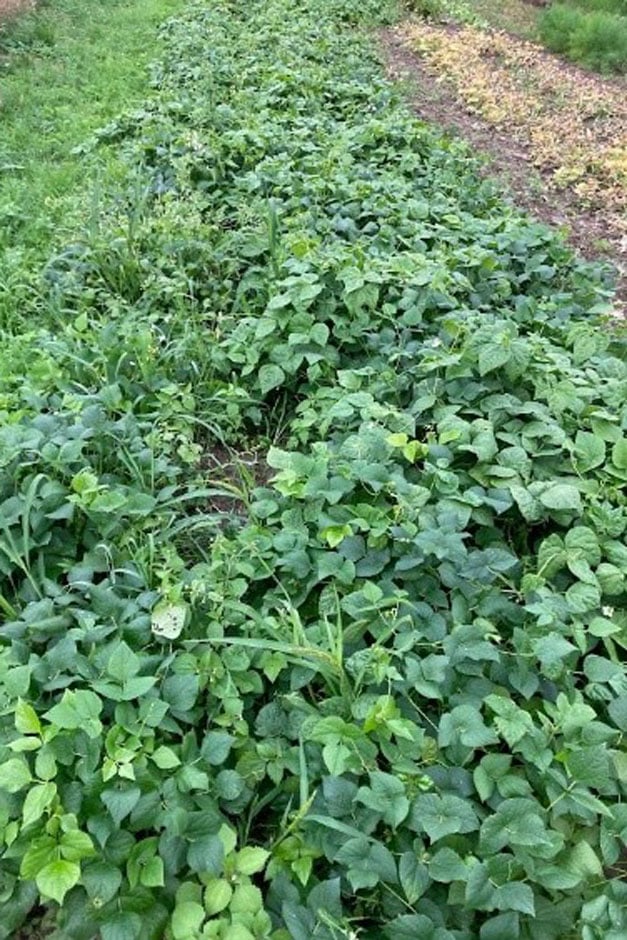
Many countries
grow beans for dried seeds (pulses). My parents collect theirs when the pods are dry in autumn, storing the seeds in paper bags. While pulses like
borlotti are popular in Britain, they also eat the seeds of French and runner beans if they don’t pick the pods in time to have them fresh.
This year, they grew the pretty yellow French bean ‘Zlota Saxa’. Other varieties included dwarf green runner beans and a purple-podded variety. Seed is often saved from year to year, so much so that we forget what the original variety was.
Cabbages
Cabbages are popular, not just used fresh in in crunchy salads or steamed, but also for preparing traditional Polish sauerkraut (Kapusta kiszona).
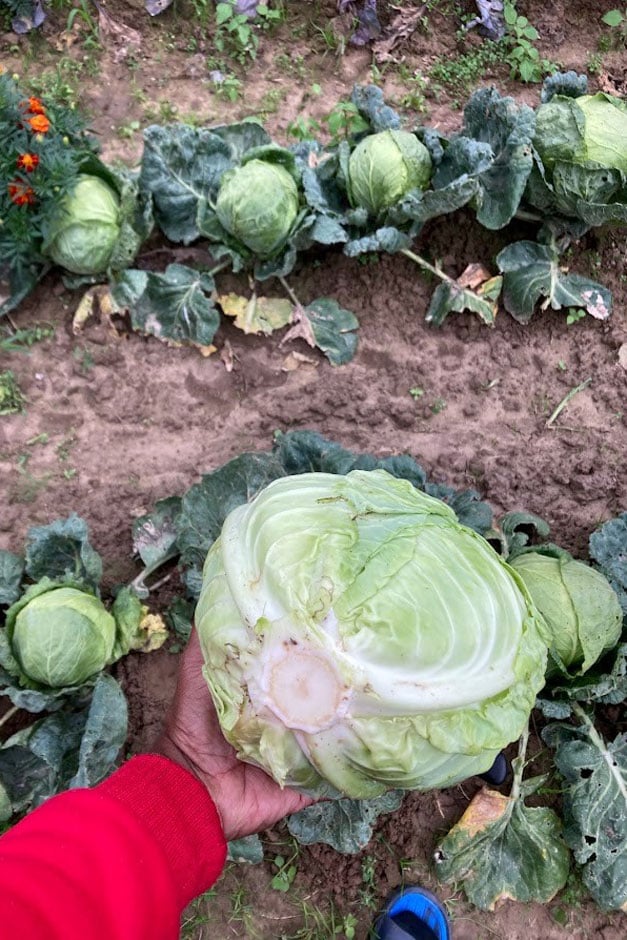
When I was a kid, we would make this in a big barrel. Everyone had a different role – one would remove the outer leaves, another would wash the cabbage, and yet another would shred them. Sometimes carrot also went into the mix.
The cabbage is salted, kneaded and pressed by walking on it with clean feet. Anyone who entered the barrel was made to thoroughly scrub their feet several times before going in.
This traditional method is still popular in some places. The process involves naturally occurring bacteria that ferment the cabbage. Sauerkraut is considered a healthy addition to diets, since it contains fibre, vitamins, minerals and probiotics.
Cabbages grown this year included: Ditmarsker2, Ditmarska Najwczesniejsza (aka Dithmarscher Fruher), Kamienna Glowa, Brunswicka (aka Brunswick).
Cucumbers

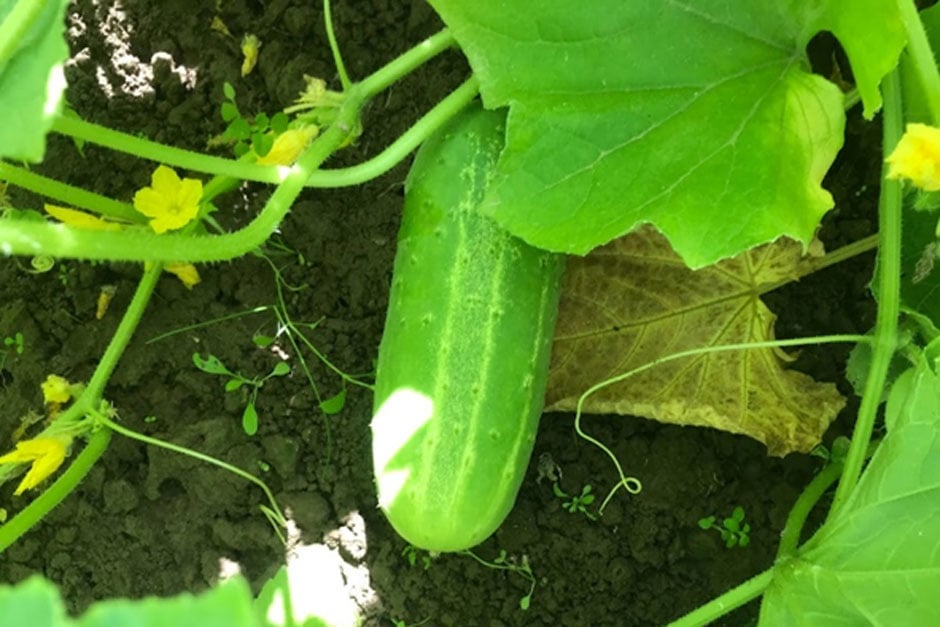 Growing cucumbers has always been popular in Poland. For salads they’re grown in greenhouses, but outdoors, mini cucumbers grow trailing over the ground. Although these can be eaten raw, most are treated like gherkins, preserving them in brine, rather than vinegar.
Growing cucumbers has always been popular in Poland. For salads they’re grown in greenhouses, but outdoors, mini cucumbers grow trailing over the ground. Although these can be eaten raw, most are treated like gherkins, preserving them in brine, rather than vinegar.
Garlic, dill, horseradish root, and leaves of cherry, blackcurrant, raspberry, oak, grape, horseradish or mustard can also be added for subtle flavour. Gherkin/cucumber cultivars grown this year were Polan F1 and Julian F1.
Tomatoes
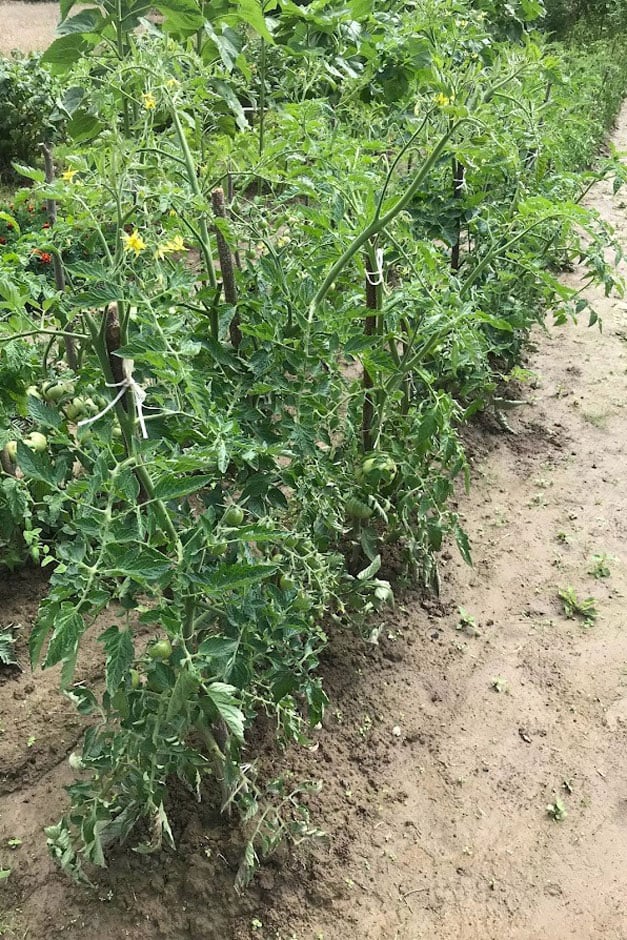
My Tata (Dad) grows
tomatoes in a homemade glass and polythene tunnel. Undercover these were fine, but outside the tomatoes were affected badly with tomato blight. He harvested the fruit but will dispose of the plants. Some that were close to ripening will colour up if kept in a warm and sunny position, but a lot of green tomatoes will go in jars.
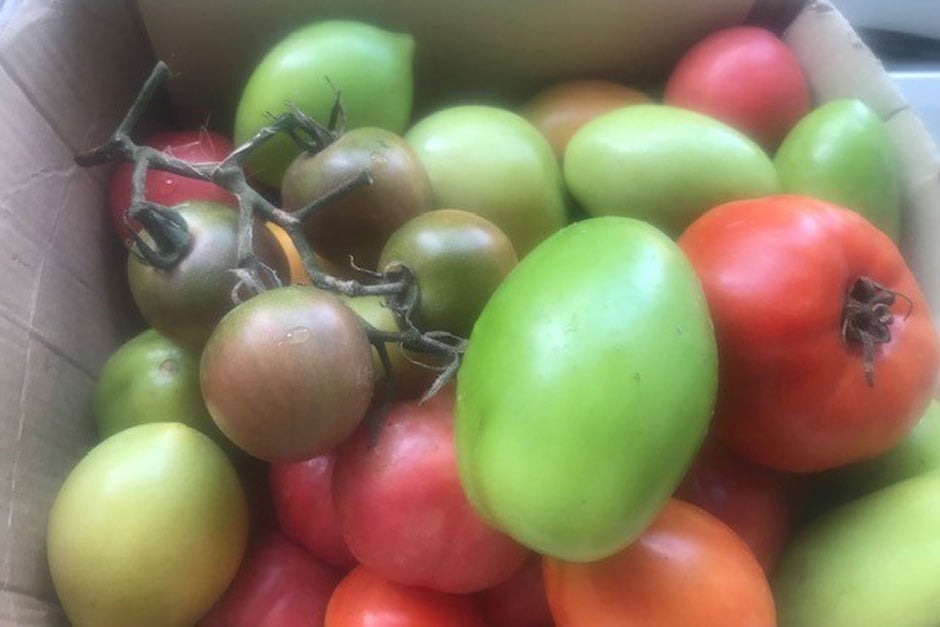
Tomato varieties grown this year were: San Marzano, Pera d’Arbuzzo, Radana, Black cherry, Vilmorin, Pedro F1 and Marmande.
Sunflowers
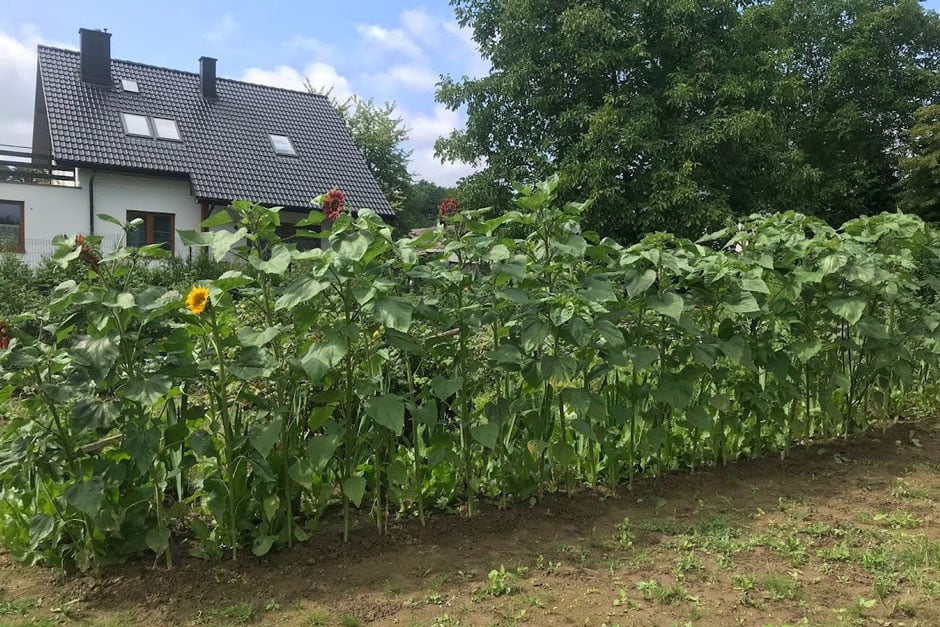
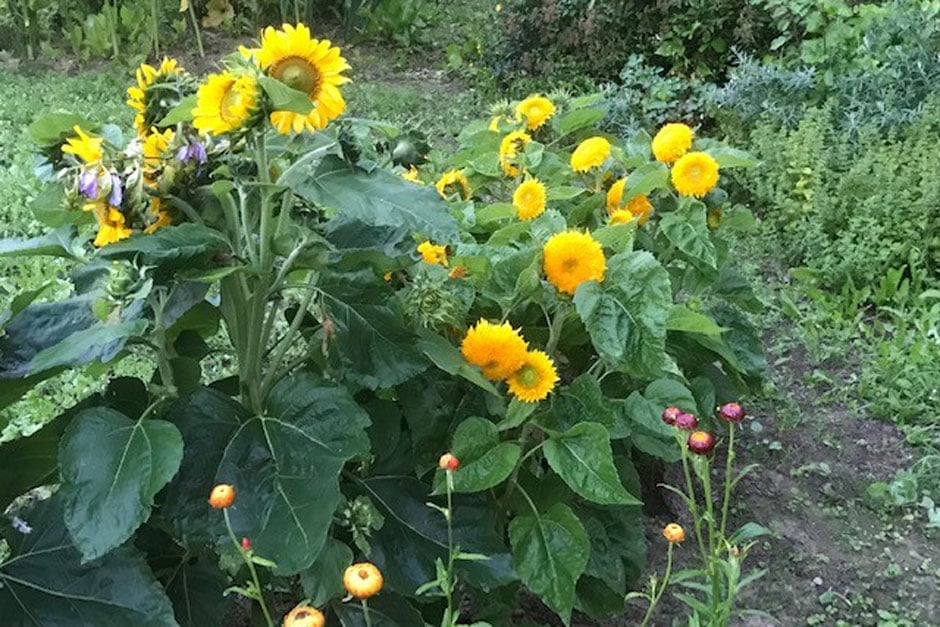 Growing in rows is a habit my parents can’t break from – sunflowers being no different. They used to grow them for the nutritious seeds, occasionally using side-shoots for the cut flowers. Eaten fresh, they’re delicious, but you could spend forever shelling the dried seed for winter stores.
Growing in rows is a habit my parents can’t break from – sunflowers being no different. They used to grow them for the nutritious seeds, occasionally using side-shoots for the cut flowers. Eaten fresh, they’re delicious, but you could spend forever shelling the dried seed for winter stores.
Fruit
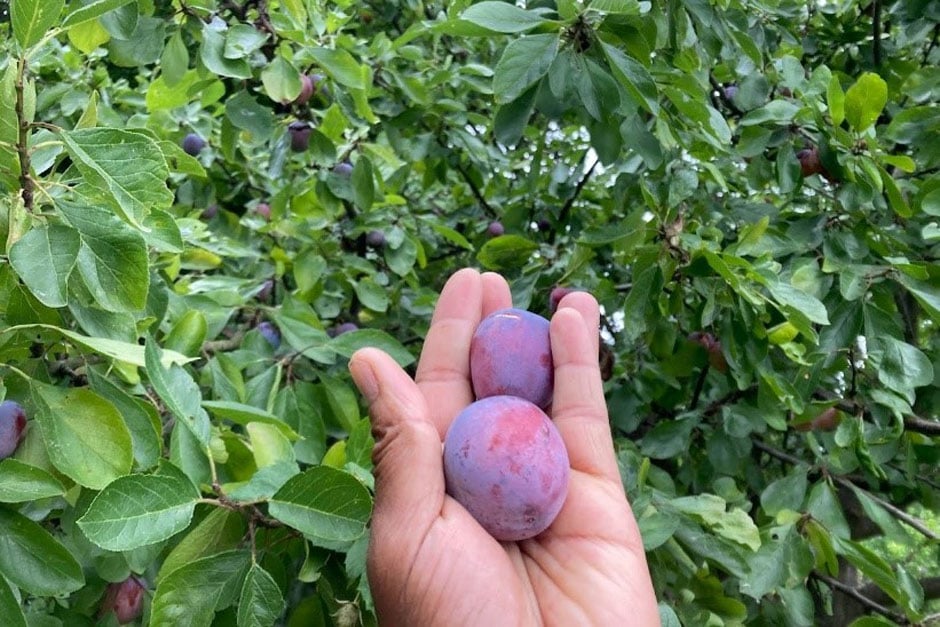 This year also has been good for strawberries, raspberries, blueberries, plums, apples, gooseberries, goji berries, wild strawberries, fruits of Cornus mas, blackcurrants and redcurrants. Gluts are saved by again preserving them in jars, an old tradition in Poland.
This year also has been good for strawberries, raspberries, blueberries, plums, apples, gooseberries, goji berries, wild strawberries, fruits of Cornus mas, blackcurrants and redcurrants. Gluts are saved by again preserving them in jars, an old tradition in Poland.
Top tip: If you’d like to try preserving in jars and bottles, for the best results follow a tried and tested recipe with clear instructions.
Pick of the crop
 Look for the RHS Award of Garden Merit (AGM) when buying vegetable seed or small plants. You can also download the RHS lists of recommended cultivars.
Look for the RHS Award of Garden Merit (AGM) when buying vegetable seed or small plants. You can also download the RHS lists of recommended cultivars.
You may also be interested in...
About the author – Adriana Czaja-Lobato
Initially I worked for the RHS on trials and propagation, before becoming a Horticultural Advisor. My present role involves answering our members’ many questions. In my spare time, I undertake private gardening work, while enjoying family days out and holidays back to my home country of Poland.

